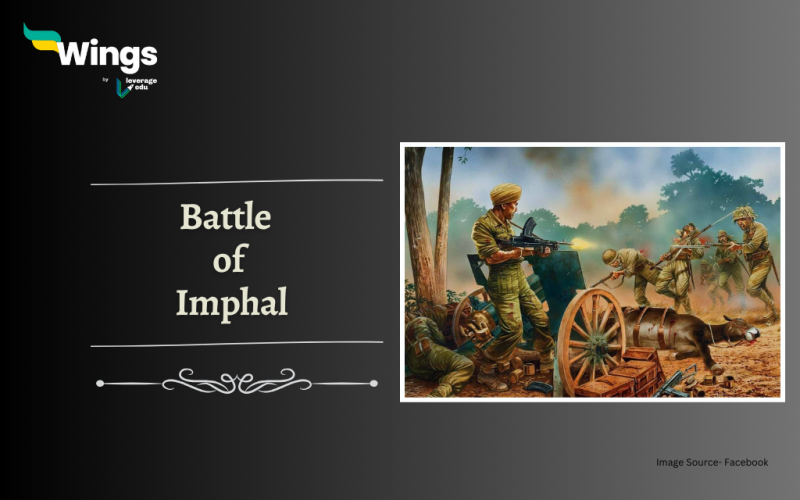In 1944, there was a battle at Imphal between the Imperial Japanese Army and the British and British Indian forces. The objective of the Japanese was to invade British India, but they suffered significant losses and were repelled, which had a profound impact on their fortunes in the Eastern theatre of World War 2. This battle is closely connected to the Battle of Kohima, which also occurred in 1944.
Table of Contents [show]
Background of the Battle of Imphal
After attacking the American naval base at Pearl Harbor in December 1941, Imperial Japan managed to conquer a large area that included eastern China and most of South-East Asia. However, their expansion was later stopped by the United States, who launched their own naval campaign. Additionally, the Japanese army in Eastern China faced continuous harassment from the Chinese resistance, which further complicated their situation.
Flights that came from the regions of Brahmaputra in North-East India were the source of supply for the Chinese. If the Japanese tried to cut off this supply route, it would lead to the destruction of the resistance of the Chinese nationalist army.
The Allied planned to launch several offensives from India and China, which aimed at a thrust into Burma, which had become known to the Japanese command. They believed that Imphal, a town in Manipur was an ideal stage and ground as it was in vicinity to the Burmese border. Imphal was connected to an even bigger base in the Brahmaputra River valley’s Dimapur region by a road that stretched for 100 miles (160 km) through the deep steep and highly forested Naga Hills.
Having this knowledge in hand, the Japanese decided to plan for an offensive of their own for an invasion of British India.
Also Read – Battle Of Porto Novo: Background, Outcome & More
Events Of The Battle
The Japanese Army named their operation to invade Imphal as ‘U-go’. They had tools from the 31st Infantry Division of the Japanese Army and units from the Indian National Army in primarily support and scouting roles.
- On 7th March at night, the Japanese Army trespassed into the borders of India and engaged with the British Indian forces who were guarding the frontiers on 8th March 1944’s morning.
- Around the Indo-Burmese border, tools of the British forces were so hard-pressed by March 12 that they were permitted to withdraw to the plains of Imphal . The withdrawal took nearly 20 days for completition.
- The Allied position was so precarious that a decision was made to airlift reinforcements and supplies.
- Between 19th and 29th March, the Indian 5th Division had to flee with jeeps, pack animals and artillery guns.
- When the first elements of the 5th Division arrived at the region, the Japanese forces were only 48 km from the area of Imphal.
On 26th March, the battle for Sangshak took place, whose outcomes would decide the battle of Imphal. The 50th Parachute Brigade put forward a strong action of defence, that eventually delayed the Japanese advancement and in turn inflicted heavy casualties on them. The delay cost the Japanese precious time and bought the defensive forces some time to prepare for their defences.
- The Japanese Army blocked road connectivity between the Imphal-Kohima on March 29th and effectively laid siege to Imphal.
- The Siege of Kohima began on 4th April 1944. It was important as it allowed direct access into India from Myanmar.
- Fierce fights took place in and around Kohima and Imphal for the entirety of April.
- However, fresh divisions came in from the mainland Indian region and made sure that all Japanese advancements were halted by 1st May.
- By this point, the Japanese Army had overstretched their supply lines, and most were starving and in no position to take Imphal.
- The defensive forces at Imphal were helped immensely when the Japanese forces were stationed near Kohima as it gave an upper hand to Allied soldiers to wage a war in the south.
However, the siege finally came to an end on 22nd June, when the British forces placed at Kohima met the advanced forces from the 5th Indian Division at a particular point named Milestone 107, which ran along the Imphal-Kohima road.
On 18th July, the Japanese High Command declared that the withdrawal was inevitable to the River Chindwin on the Burma side of the Indian/Burma border. It is estimated that nearly 53,000 casualties were reported from the Japanese side, while the British side faced a loss of 17,000 men, killed, or wounded.
Also Read – Battle Of Ten Kings: Background, Event, Outcome & More
Significance of the Battle of Imphal
The Battle of Imphal held great significance as the Japanese suffered a disastrous defeat in 1944. This defeat further added to their misfortunes. The loss of experienced fighting men at Imphal made it impossible to stop the Allied advance into Burma the following year. The Japanese had to expend a significant amount of manpower in a gamble that yielded no dividends. As a result, they were unable to defend their other holdings in Southeast Asia.
Relevant Blogs
This was all about the Battle of Imphal. For more content related to the different states of India, visit our articles like this, you can get Study notes on the Modern History of India here. Also, you can visit our general knowledge page on Indian History!
 One app for all your study abroad needs
One app for all your study abroad needs















 45,000+ students trusted us with their dreams. Take the first step today!
45,000+ students trusted us with their dreams. Take the first step today!
